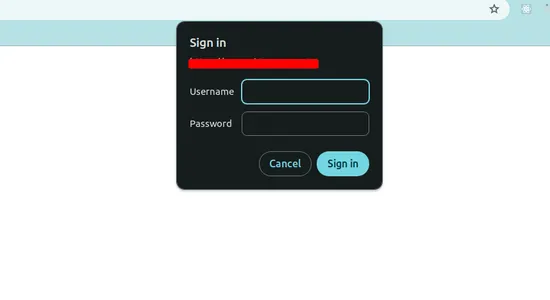# Securing Swagger Documentation with express-basic-auth in Nodejs - Nestjs | Code đủ thứ
Table of Contents
Swagger is a powerful tool for creating and managing API documentation. However, securing Swagger documents is crucial to ensure that sensitive information is not exposed. In this article, we will explore how to use the express-basic-auth library to protect Swagger documentation pages in JavaScript and TypeScript projects. We will focus on two cases: a regular JavaScript/TypeScript project and a NestJS project with @nestjs/swagger.
After implementation, a user/password input form will appear when accessing the document page, and the correct credentials must be entered to view the document:

1. Install the express-basic-auth library
First, we need to install the express-basic-auth library. For regular JavaScript/TypeScript projects, you can run the following command:
npm install express-basic-authIf you are using TypeScript, add types for express-basic-auth:
npm install --save-dev @types/express-basic-auth2. Secure Swagger Document Page in JavaScript/TypeScript Projects
JavaScript
const express = require("express");const basicAuth = require("express-basic-auth");const swaggerUi = require("swagger-ui-express");const swaggerDocument = require("./swagger.json");
const app = express();
// Secure Swagger page with express-basic-authconst users = { admin: "password123" };app.use( "/api-docs", basicAuth({ users, challenge: true }), swaggerUi.serve, swaggerUi.setup(swaggerDocument));
// Other routes and middleware of the application// ...
const PORT = process.env.PORT || 3000;app.listen(PORT, () => { console.log(`Server is running on port ${PORT}`);});TypeScript
import express from "express";import basicAuth from "express-basic-auth";import swaggerUi from "swagger-ui-express";import swaggerDocument from "./swagger.json";
const app = express();
// Secure Swagger page with express-basic-authconst users = { admin: "password123" };app.use( "/api-docs", basicAuth({ users, challenge: true }), swaggerUi.serve, swaggerUi.setup(swaggerDocument));
// Other routes and middleware of the application// ...
const PORT = process.env.PORT || 3000;app.listen(PORT, () => { console.log(`Server is running on port ${PORT}`);});challenge: true You need to pass this parameter to express-basic-auth to display the login prompt.
Usersname is admin
password is password123
3. Secure Swagger Document Page in NestJS Project
For NestJS projects, we can use express-basic-auth in the main.ts file of the application.
import { NestFactory } from "@nestjs/core";import { SwaggerModule, DocumentBuilder } from "@nestjs/swagger";import * as basicAuth from "express-basic-auth";import { AppModule } from "./app.module";
async function bootstrap() { const app = await NestFactory.create(AppModule);
// Secure Swagger page with express-basic-auth const users = { admin: "password123" }; app.use("/api-docs", basicAuth({ users, challenge: true }));
const options = new DocumentBuilder() .setTitle("Your API") .setDescription("API documentation") .setVersion("1.0") .build(); const document = SwaggerModule.createDocument(app, options); SwaggerModule.setup("api-docs", app, document);
const PORT = process.env.PORT || 3000; await app.listen(PORT);}bootstrap();Conclusion
That’s how you can secure the Swagger document page in JavaScript and TypeScript projects using the express-basic-auth library. With this article, you can apply a similar approach in your projects to ensure that your API documentation is securely protected.
